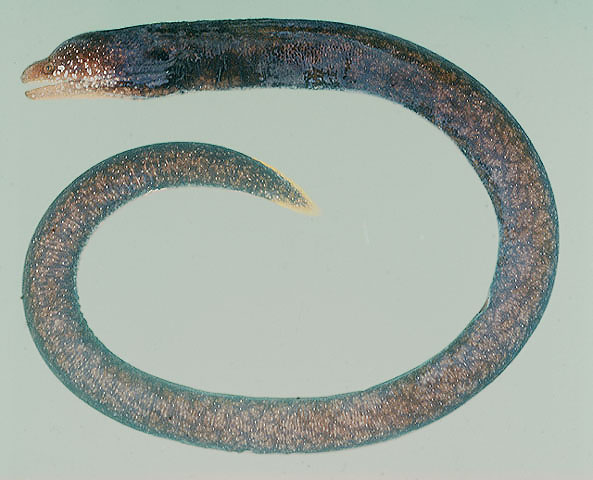| Muraenidae (Moray eels), subfamily: Uropterygiinae |
| 47 cm TL (male/unsexed) |
|
reef-associated; marine; depth range 1 - 14 m |
| Indo-Pacific: Red Sea (Ref. 84159); Reunion and Mauritius (Ref. 33390), Seychelles (Ref. 10685); Christmas Island to the Society Islands, north to southern Japan and the Hawaiian islands. Eastern Pacific: southern Gulf of California to Ecuador, including the Revillagigedo, Cocos, and Galapagos islands (Ref. 9324). Specimen from Thailand needs further comparison (Ref. 1632). |
|
Dorsal spines (total): 0-0; Dorsal soft rays (total): 0-0; Anal spines: 0-0; Anal soft rays: 0-0; Vertebrae: 102-119. Teeth biserial.
Description: Characterized by brown color; head and body covered with dense network of stellate white to yellowish blotches; body depth at gill opening about 13-21 in TL; rudimentary fins; anus anterior or posterior to middle of body; preanal length 1.9-2.3 in TL; large head, 6.4-8.0 in TL; gill opening low on side; numerous teeth, in two rows in jaws, inner row of slender canines; front of upper jaw with longest teeth medially (Ref. 90102). |
| This species inhabits exposed seaward reefs to a depth of 14 m or more (Ref. 37816). Benthic (Ref. 58302). Solitary in crevices, rarely seen (Ref 90102). |
|
Least Concern (LC); Date assessed: 19 August 2011 Ref. (130435)
|
| harmless |
Source and more info: www.fishbase.org. For personal, classroom, and other internal use only. Not for publication.

